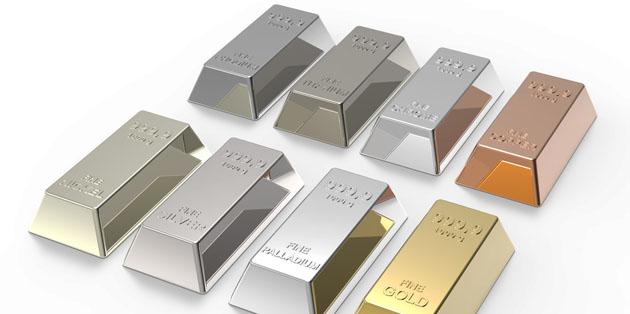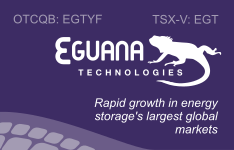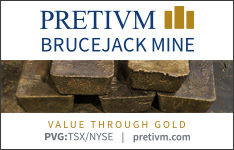Maurice Jackson: Joining us for a conversation is Andy Schectman, the president of Miles Franklin Precious Metals Investments.
We have some important topics to address today regarding physical, precious metals. Before we begin, for first time listeners, who is Miles Franklin, and what type of services do we provide?
Andy Schectman: Miles Franklin is a precious metals company that's been in business in Minneapolis since 1990. We've operated almost 29 years without a customer complaint, ever. We have an A Plus rating with the Better Business Bureau, and are one of fewer than 30 companies in America to ever be approved by United States Mint as an authorized reseller of its product. And more than anything, in a federally non-regulated industry, Maurice, that stands for something.
We've seen so much fraud in this industry, typically centered around the low-priced online retailers. In fact, we've never had a customer complaint is something we're very proud of. But the state of Minnesota takes it one step further. We're the only state in America that regulates the precious metals industry. We are beholden to the Commissioner of Commerce with the surety and background checks annually of every single one of our employees.
"Silver is probably one of, if not the buying opportunity of a generation."
That continuing education, compliance, surety bond is enough to make the majority of our competitors throughout the country boycott the state of Minnesota, as they too would be subservient to the same set of regulations that we are. And what it basically means is anyone buying precious metals from a company domiciled in Minnesota would have arguably the safest, most secure transaction in the country, because the state regulations all but guarantee it.
Maurice Jackson: You and I had an offline discussion regarding the opportunity of a lifetime that you see in silver. Let's discuss the value proposition before us regarding silver. Please share, what has your attention at the moment, and why.
Andy Schectman: When I look back over the years and try to identify the moments or the trends that have shaped our success, and the calls that we have made as a company that have panned out, they typically center around anomalies or distortions in the price market. We can take a look at the position of the most sophisticated, well-funded, well-informed traders in the globe, the commercial banks, and in particular JP Morgan, and see something very illuminating.
First off, JP Morgan has amassed over 800 million ounces of physical silver in its house account. That is eight times what the Hunt Brothers tried to accumulate in 1980. It is, in fact, the largest physical position the world has ever seen at one time. And more significantly, it has used the suppressed paper price to accumulate the physical. Since it inherited Bear Stearns' short position in 2008, JP Morgan has been net short. And the largest short position on the COMEX market. And believe it or not, have never had one losing day. Not one losing trade, ever, in its short book since 2008. It's almost mathematically impossible.
A lot of investors wonder about this short position, and think that this could go on forever. JP Morgan has proven, with the success of it shorting the paper market, that it does not need to accumulate 800 million ounces of physical silver in order to manipulate the price. Quite to the contrary. I think it manipulated the paper price in order to accumulate 800 million ounces of physical silver.
And what has really gotten my attention is that for the first time since JP Morgan inherited Bear Stearns short position in 2008, and for only the third time in the last 45 years, the commercial banks have gone long in the futures market. Including JP Morgan. It has reversed course, and has gone long on the COMEX markets. So the combination of reverse course in the most sophisticated, well-influenced, well-funded traders on the globe, going long on paper, you see the world's largest ever accumulation of physical silver in its house account.
I think the two combined are really very, very intriguing to me. If nothing else, people should stand up and take notice of what the big boys are doing right now.
Maurice Jackson: Andy, just to clarify, because sometimes there's a lot of ambiguity regarding the actions of JP Morgan. Talk to us, is the relationship between the proxy SLV (iShares Silver Trust) and JP Morgan?
Andy Schectman: Yes, it is. JP Morgan has the ability to pull silver out of SLV, and take possession of it. But by doing so, it allows it to take possession of silver without it being recorded. So Ted Butler would tell you that's one of the ways that it has accumulated vast amounts of physical silver, sort of off the books. So yes, I think the ability for JP Morgan to take possession of silver out of SLV is one of the vehicles that it has used to accumulate vast amounts of silver without it being recorded through the normal channels of taking metal off the COMEX Exchange.
Maurice Jackson: Now for the individual investor, Mr. Schectman, let's talk about what actions they can and should do regarding silver prices currently.
Andy Schectman: I think you don't have to look any further than the ratio between gold and silver right now. If you go back literally 45 years, there's been but one brief moment, and that was in 1993, where trading your gold and silver would've netted you more silver. In fact, what's interesting now, Maurice, if you look at the last 50-years worth of price action, pretty much the average ratio between gold and silver has been about 40 or 45 to 1. Right now, we find that world ratio north of 80 to 1.
So when you put it all together, other than a brief moment in 1993, in the last five decades there's never been a better time to trade gold for silver. In fact, at this ratio, one could expect to trade gold for silver right now, and then in a few years' time or less, if the ratio just simply finds its way back to the mean, to the average, double the amount of gold.
In other words, you trade at 80 to 1, hope it goes back to the mean or to the average if not below, of 40 to 1. Convert back into gold and double the amount of gold that you started with.
When I look at a ratio that is this far out of wack, over 80 to 1, double what it's been on average for the past 50 years. Plus the positioning of the most sophisticated traders on the globe, going long for really the third time in 45 years. The first time that I can remember. Along with accumulating the largest physical position of silver the world has ever seen at one time. And coupled with the fact that you don't hear about any of this through any mainstream channels. It really makes me think that silver is probably one of, if not the buying opportunity of a generation.
I try to say that, Maurice, with all sincerity and objectivity. I can't see a better investment when you're able to buy something right now, that is a third of what it was in 1980, and costs more to pull it out of the ground right now. And you're seeing the most sophisticated traders on the globe amass huge amounts of it. If I were a gambling man, I'd like to say that's a bet I'd like to take.
Maurice Jackson: Andy, I appreciate your veracity. I know you personally, and you're a man of integrity. One of the things I noticed here in all of your comments is that you're not making a specific statement regarding the price of silver, will reach price X. You're focused more on ratios. And that's very important for our audience to understand, to use the ratios to your advantage.
Now let's switch gears on to platinum. Talk to us about the enormous potential here. What can you share with us?
Andy Schectman: I love the way you phrase that, Maurice. Ratios and the law of averages are very, very important tools. In fact, I would say, it's probably the most important gauge that I've used in the past 30 years to direct me, as it pertains to exploiting and identifying anomalies and market distortions that typically don't last.
And you could say the exact same thing right now between the gold and platinum ratio. In fact, you can go back 45 years or more. On my data right now that I'm looking at goes back 43 years. But there was one little spike in 1981 or 82, where the gold to platinum ratio was maybe where we are right now, or slightly higher by a tick. Right now, we are 1.45. In other words, you can trade one ounce of gold for 1.45 ounces of platinum based upon the spot prices.
The average over the past 50 years has been closer to, 0.7 instead of 1.45. In other words, you trade an ounce of gold, you'd be lucky to get three quarters of an ounce of platinum. For most of the last 50 years, platinum has been priced much higher than gold, always at a premium. And a few times I can remember, 2011 or so, where one ounce of gold was $800 or $900. And platinum was $2,300.
So bottom line is here we go again. We have a ratio. We are at the highest level, or almost the highest level in the last 50 years. And it's almost identical to the gold to silver ratio. Where here again, you could trade gold for platinum, and have nothing other than the average price between the two is reached, you can double the amount of gold that you traded into.
You can say the same thing about the platinum to palladium ratio. There has never been a time where you could trade palladium and get more platinum. Typically, you would get 4 ounces of palladium for 1 ounce of platinum. And right now, you get three-quarters of an ounce of palladium for one ounce of platinum. These are ridiculously skewed ratios. You're not talking a small sampling of time here. You're talking four, five decades of data, where all of a sudden things are upside down.
Now I'm not here to tell you why things are upside down. Simply to tell you that they are upside down. And when you look at the law of averages, to me it is a very, very, very powerful tool. Mathematical ratios are there for a reason. They're time tested and true. And so when we talk about opportunities, there are tremendous opportunities. If I own palladium right now, I would run as fast as I can to trade it to platinum. If I were looking to acquire platinum, the first place I might consider is trading some gold for it, rather than writing a check for it.
If there's the ability to trade some gold or some palladium for platinum, to play the law of averages, to consider trading it back when that law comes back or those numbers come back to the mean, which they will, you'll double the amount of gold you started with. Whether it be trading gold to platinum, palladium to platinum, or gold to silver. Again we are exploiting a disconnection or an anomaly in the ratios that go back 50 years.
Is there an opportunity? I'd say, heck yes. And I would say this with all sincerity; these opportunities are as good as I've ever seen in the 30 years nearly that I've owned Miles Franklin.
Maurice Jackson: About two years ago, you shared with me, "Maurice, watch out for platinum here. The price is going to go down." And you shared the very same sentiments right here. Look at reducing your positions in gold and palladium. We did exactly that. And the ratios were tighter at that time. But here's the difference as well. You have to be fundamentally and educationally prepared that what you just shared, that the price may even go lower. And as the price of platinum has gone lower, we've actually added more and more positions to our platinum because we understand exactly what you're sharing, that we would get more ounces of palladium and or gold. We're just using the ratios to our advantage.
So thank you for those words of wisdom, because I think what happens sometimes is the thesis makes sense for something, but then the price continues to drop and two years pass, and we get discouraged and we give up. And this is the time where individuals like yourself and those that have been serially successful in this industry, this is what they do. They buy low, and they will sell high.
Andy, before we leave, last question. What did I forget to ask?
Andy Schectman: Bottom line is this: there are opportunities to be found. You don't have to write a check out to find opportunities. I will honestly say to you that one of the keys if you're in this for the long run, if you see the reasoning to hold precious metals. You see that a trillion seconds ago was 31,688 years ago. You see a $22 trillion debt, and $150 trillion unfunded liabilities and a world that's getting somewhat crazier by the day probably isn't long-term sustainable. And you want to hold some metals for these reasons.
Then it's imperative to realize the legitimacy of playing these ratios. Of moving in and out. And physical metals sometimes are not the best vehicle for doing so. Because you have to pack it up and send it. It doesn't diminish the importance of exploiting and taking advantage of them. If you can get past the inconvenience, boxing things up and sending, which we're very adept at helping people with, then I think these are really truly opportunities of a generation that I've never seen before, these types of distortions. And if we do nothing other than come back into focus with reality, with what we've seen for the past 40, 50 years, these are opportunities where we're talking of doubling a position. That's not something that you hear very often in this industry.
So I think the only thing that I would add to what we've talked about is that if we exploit these ratios of trading palladium for platinum, or trading gold for platinum, or trading gold for silver, we also have to keep in the back of our mind the possibility of going back to gold. Or going back to palladium, perhaps. And that's kind of what I'm getting at here. Is that there have been times in the past 29 years where we have made these switches and switched back. The one thing that's different this time, and it's kind of been the central theme for the past year, and we talked about this before, is that there are more of these happening simultaneously than I can ever remember.
I can think of two or three or four instances in 30 years where we had price anomalies that we took advantage of. And they are few and far between. But to see three or four of them right now, at the exact same time, just like we talked before about the numismatic market anomalies all over the place. To see them happening at the same time is what is vastly different. And to the extended degree that we see things is even more startling. And I guess I'd leave your listeners with one piece of, I don't know, solace or commiseration. And that is simply that, yes, it has been frustrating. There hasn't been a correlation between logic and outcome. But in the end, I can tell you looking back on the last 30 years that mathematics and economics have a way of playing themselves out. It takes longer than people would like. This is a high stakes game.
Don't lose faith, have strong fingertips. Be able to hang on, and see the importance of a position in physical precious metals, and see the relevance in maneuvering them to take advantage of these anomalies and these opportunities. Which for me to say to someone this is as good an opportunity I've seen in 30 years, takes a lot for me to say that. But I do honestly believe it. Trading gold for silver right now is as good of an opportunity as I have ever seen in the 29 years I've owned Miles Franklin. And I would say the same thing about palladium to platinum. Right now if you own palladium, you're out of your mind if you don't trade it for platinum.
So again, these are interesting times, and we are here to help people navigate it, and maximize their holdings in precious metals. I can't tell you how much I appreciate you helping get the word out there. Because that's just as important, too. Letting people know, and for everyone out there reading, Maurice Jackson, is as honorable as a man I've ever met in all my years at Miles Franklin. He does as he says, and so for what it's worth, Maurice, we appreciate you very much as well.
Maurice Jackson: Well I'm honored to hear that, sir. Thank you so much. Mr. Schectman, thank you for sharing your wisdom and insights. For someone that wants to get more information regarding Miles Franklin, please share the website and phone number.
Andy Schectman: MilesFranklin.com, 1-800-822-8080. And I can be reached by email at [email protected].
Maurice Jackson: As a reminder for our audience, we are licensed brokers to buy and sell gold, silver, platinum, palladium and rhodium. That's correct, rhodium. Offshore storage accounts and Precious Metals IRAs. If you wish to have a conversation with me, please email [email protected], or call 919-274-5680. And last but not least, please visit our website ProvenandProbable.com, where we interview the most respected names in the natural resource space. You may reach us at [email protected].
Andy Schectman of Miles Franklin Precious Metals Investments, thank you for joining us today on Proven and Probable.
Maurice Jackson is the founder of Proven and Probable, a site that aims to enrich its subscribers through education in precious metals and junior mining companies that will enrich the world.
[NLINSERT]Disclosure:
1) Andy Schectman is the owner of Miles Franklin Precious Metals Investments.
2) Maurice Jackson is a licensed representative of Miles Franklin Precious Metals Investments. Proven and Probable disclosures are listed below.
3) The following companies mentioned in this article are billboard sponsors of Streetwise Reports: None. Click here for important disclosures about sponsor fees.
4) Statements and opinions expressed are the opinions of the author and not of Streetwise Reports or its officers. The author is wholly responsible for the validity of the statements. The author was not paid by Streetwise Reports for this article. Streetwise Reports was not paid by the author to publish or syndicate this article. The information provided above is for informational purposes only and is not a recommendation to buy or sell any security. Streetwise Reports requires contributing authors to disclose any shareholdings in, or economic relationships with, companies that they write about. Streetwise Reports relies upon the authors to accurately provide this information and Streetwise Reports has no means of verifying its accuracy.
5) This article does not constitute investment advice. Each reader is encouraged to consult with his or her individual financial professional and any action a reader takes as a result of information presented here is his or her own responsibility. By opening this page, each reader accepts and agrees to Streetwise Reports' terms of use and full legal disclaimer. This article is not a solicitation for investment. Streetwise Reports does not render general or specific investment advice and the information on Streetwise Reports should not be considered a recommendation to buy or sell any security. Streetwise Reports does not endorse or recommend the business, products, services or securities of any company mentioned on Streetwise Reports.
6) From time to time, Streetwise Reports LLC and its directors, officers, employees or members of their families, as well as persons interviewed for articles and interviews on the site, may have a long or short position in securities mentioned. Directors, officers, employees or members of their immediate families are prohibited from making purchases and/or sales of those securities in the open market or otherwise from the time of the interview or the decision to write an article, until one week after the publication of the interview or article.
Proven and Probable LLC receives financial compensation from its sponsors. The compensation is used is to fund both sponsor-specific activities and general report activities, website, and general and administrative costs. Sponsor-specific activities may include aggregating content and publishing that content on the Proven and Probable website, creating and maintaining company landing pages, interviewing key management, posting a banner/billboard, and/or issuing press releases. The fees also cover the costs for Proven and Probable to publish sector-specific information on our site, and also to create content by interviewing experts in the sector. Monthly sponsorship fees range from $1,000 to $4,000 per month. Proven and Probable LLC does accept stock for payment of sponsorship fees. Sponsor pages may be considered advertising for the purposes of 18 U.S.C. 1734.
The Information presented in Proven and Probable is provided for educational and informational purposes only, without any express or implied warranty of any kind, including warranties of accuracy, completeness, or fitness for any particular purpose. The Information contained in or provided from or through this forum is not intended to be and does not constitute financial advice, investment advice, trading advice or any other advice. The Information on this forum and provided from or through this forum is general in nature and is not specific to you the User or anyone else. You should not make any decision, financial, investments, trading or otherwise, based on any of the information presented on this forum without undertaking independent due diligence and consultation with a professional broker or competent financial advisor. You understand that you are using any and all Information available on or through this forum at your own risk.





























































